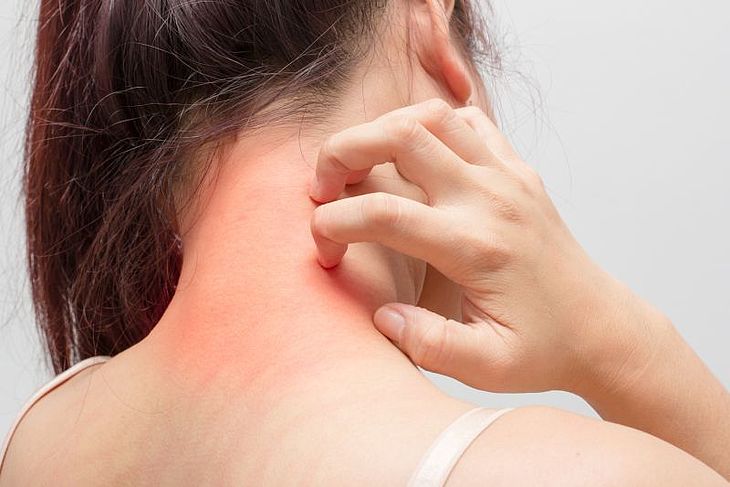Atopic skin is suffering from Atopic dermatitis which symptoms are dryness and itching. It is a skin reaction to contact with a food allergen, a contactant or an inhalant allergen. To alleviate AD symptoms skin changes need to be treated, proper care implemented and allergens avoided (the last one may be difficult because allergens in all cases are different and need to be first identified). How to take care of atopic skin?
How to take care of atopic skin?
Emollients
Atopic skin has a different structure than healthy skin. The basic change is that atopic skin does not have enough lipids (responsible for connecting cells) and the compounds responsible for retaining the water. Due to it, skin becomes dry faster and reacts badly to various external factors.
To restore it with a good condition, you need to moisturize it on a regular basis a few times a day. On top of it, you need to quit the use of popular drugstore cosmetics as those contain irritation causing substances that are safe only to healthy skin. Mentioned ingredients are usually colorants and fragrances known to be allergy triggering. For this reason, widely-used cosmetics should be replaced with cosmetics for atopic skin. This type of product contains emollients, fatty acids, squalene or urea. Emollients are the most important when it comes to atopic eczema because are able to penetrate the lipid layer of epidermis filling the deficits and restoring the protective skin barrier that prevents dehydration, among many.
Choosing cosmetics for atopic skin is not easy so you should consider reaching out to a doctor for a piece of advice or ask for a sample at the pharmacy because you may never know how supersensitive skin will react to the given product. Once you found a cosmetic that meets all your expectations, you have to use it a few times a day because the properties of creams and emollients disappear after around four hours from application. Apply a thin layer and avoid rubbing motion.
Healing baths
For atopic skin, a bath is a chance to remove all potential irritation causing ingredients from its surface. It is particularly important when symptoms are more severe. It is because then skin absorbs all moisturizing ingredients way better, removes cosmetics’ residues and scabs so makes emollients and drugs’ action more effective.
For the bath to be more effective, the water should be non-chlorinated but for example, preheated or filtered tap water. Its temperature cannot be higher than 86°F because the higher temperature can cause or increase itching. Prolonged contact with water may also be harmful to atopic skin so limit the bath to 5 minutes. Recommended cosmetics are syndets or emollients.
During the bath, the skin should not be rubbed so do not use a sponge as it may damage skin and transfer bacteria. As the bath is approaching ending, you need to add some of the moisturizing cosmetics (if you add it earlier the washing products will make it less effective).
If the skin is covered by many bacteria-based changes, you may add half a glass of sodium hypochlorite (limits itching) or potassium permanganate (prevents golden staph development). Attention: each of those substances can be added to the bath exclusively after first consulting it with a doctor.
After getting out of the bath, gently dry skin and massage in thick layer of emollient into damp skin, which will provide a cooling sensation and calm itching.




Leave a Reply